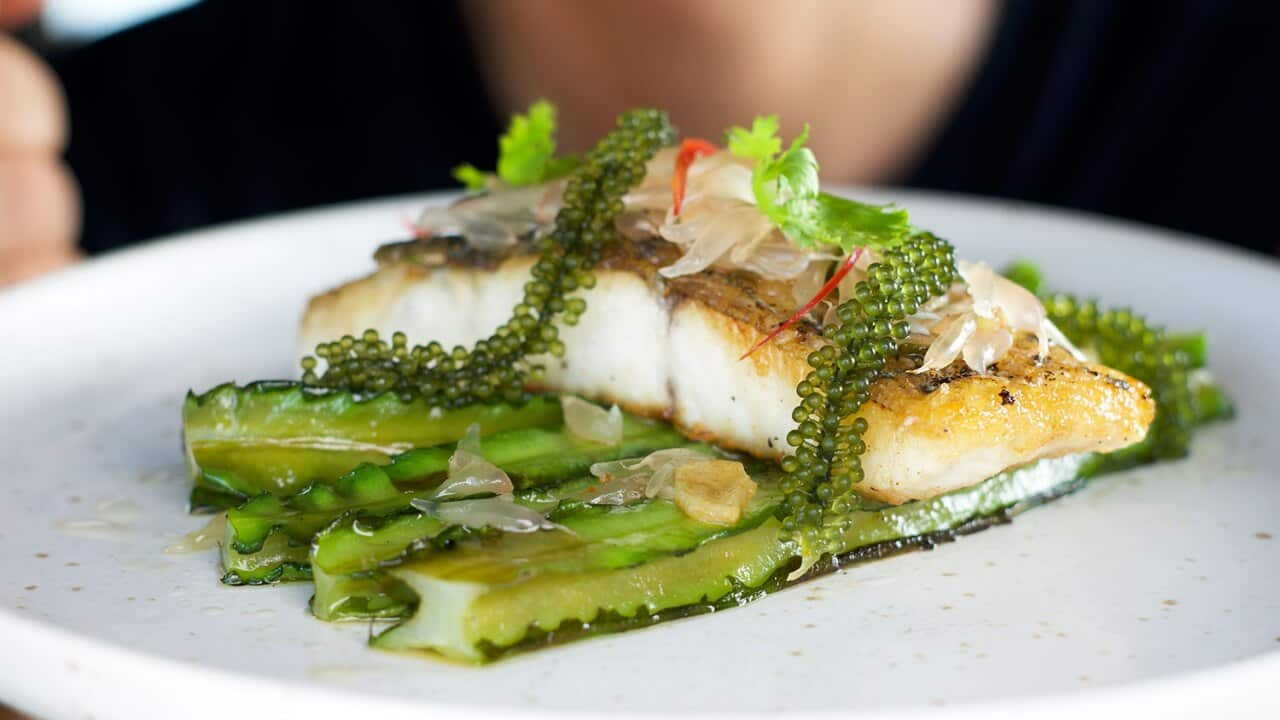If you’re feeling hungry in the nation’s capital and have an itching to hear the echoing crunch of a baguette or feel the tingle of pork pate mixed with mayo and pickle on your tongue, then the go-term locals use to describe the source of your craving is a ‘Saigon roll’.
Although Vietnam’s famed pork rolls are correctly named banh mi, here in Canberra the phrase ‘Saigon roll’ is the sandwich’s unofficial title.
Angela Phan, owner of (ACT), explains there’s no real difference between what someone from NSW calls a pork roll or banh mi and what a Canberran describes as a Saigon roll.
Essentially, they are both the classic street-vendor style of baguettes, split down the centre, filled with pork (or chicken), pork pate, carrot, daikon, coriander, chill, cucumber, and a drizzle of soy sauce. The difference is really only in the Canberra branding.
“Locals use the term ‘Saigon rolls’ because that’s what they are used to calling them for years,” says Phan, who runs the café’s Gungahlin shopfront. “But slowly, more and more people are adopting the term ‘pork roll’ as it’s being introduced around here.
“The good news is that these days we have a lot more customers who use the correct term, banh mi, when ordering the sandwich. It’s great to see customers using the proper name and having so much love for Vietnamese food.”
So what’s in a name, really?
Technically, the term ‘Saigon roll’ isn’t so obscure, as the sandwich was first created in Saigon (also known as Ho Chi Minh City)
So why is the phrase ‘banh mi’ (pronounced “bun-mee” in Vietnamese) so significant to this dish? Well, first, there’s the most obvious reason – banh mi is the true name for the sandwich, according to the cultural group who invented it.
‘Banh’ also to mean bread in English, while ‘mi’ means wheat. Hence the sandwich is aptly named after a white Vietnamese baguette – the key focus on the meal.
It goes without saying then that an authentic banh mi, a descendent of the French pain de mie, should feature a quality, fresh baguette that’s soft on the inside and crunchy on the outside. Traditionally, the baguette is made with a blend of rice and wheat flour.
Phan tells SBS her family has been baking banh mi baguettes for over 20 years at the in Mawson, ACT. Her Saigon-born parents – Hong and Michael – started the business that’s now spread across two shopfronts and have been proud to sell banh mi just like they had in Vietnam, made with freshly baked bread.
“Running a bakery was the first job they took to survive, after they came to Australia in 1991,” says Phan. “At the time, they were raising a family and spoke little English. But they both love to cook and while running a bakery, discovered their true love of exploring different foods. So [Hong and Michael] took the chance to create and bake fabulous treats for customers to try.”
These days, the two bakeries pump out 400-500 Saigon pork rolls – or banh mi – each day. For die-hard banh mi enthusiasts, the bakery sells four flavours to choose from: a traditional pork roll, a roll made with crackling pork, lemongrass beef or a combination of traditional pork with a serve of crackling.
“We make and bake our Saigon rolls every single day. Between our shop and wholesale business, we bake over 1,000 rolls a day.”
Baking enough fresh bread to cater for two café shopfronts, while serving other bakery goods, is no easy feat. “To make bread takes a lot of commitment,” she says. “It requires the weight full of patience, hard work and a big pinch of love.
“Another important part to preparing a tasty banh mi is to have the right portion of each ingredient in the baguette. We make freshly cooked Saigon rolls by combining fresh vegetables and the right amount of flavoursome meat, and knowing how to layer it all nicely.
“But the true secret to a good banh mi is to be passionate about the sandwich when you’re making it…We are just so pleased to see everyone from different backgrounds in Canberra trying our pork rolls – and loving them.”
Follow our from the south of Australia to the north. Next stop, Adelaide. For an on-the-ground Vietnamese food crawl catch the new series of where he travels from the south to the north of the country, chatting, tasting and cooking along the way. Watch it 7:30pm on SBS and Sundays at 9pm on SBS Food from 5 2019 December to 30 January 2020 or on .






